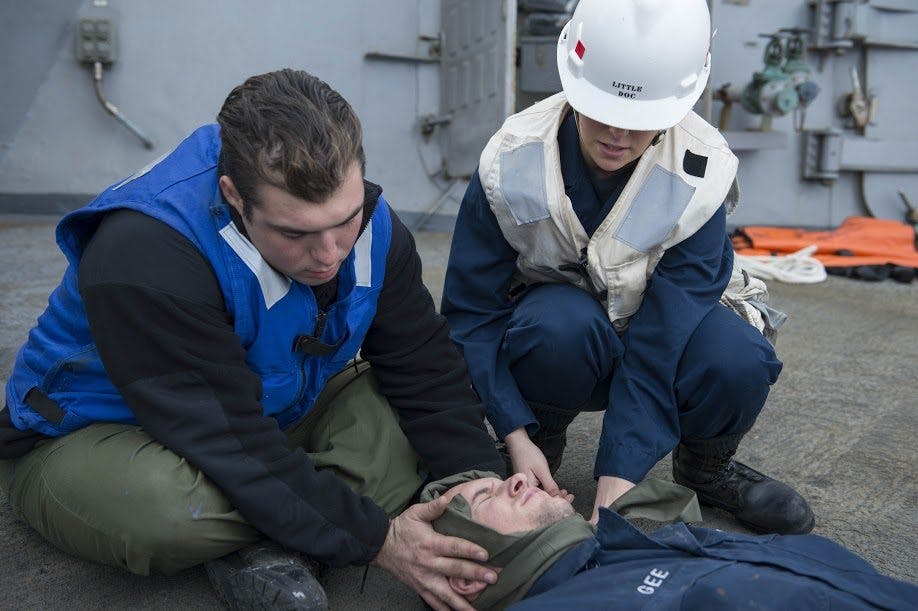If someone hits their head, how can you make sure they’re fine and what should you do if they’re not? St John’s Dr Craig Ellis explains.
Head injuries are common. Severe head injuries are rare.
The most common head injury we see is someone who has been stunned or briefly knocked out after a blow to the head. Less commonly a severe blow to the head can cause a skull fracture, bleeding in or around the brain or significant shaking of the brain, causing a life-threatening problem.
Deciding the severity of a head injury can be difficult, particularly when you are off the beaten track.
When to call for help
If any of the following symptoms are present the more likely the patient is to have a more significant head injury:
- Knocked out or unconscious – for more than a few seconds
- Persistent vomiting – continued or delayed vomiting should ring alarm bells
- Severe headache – a mild headache that can be relieved by simple pain medicine like paracetamol or Ibuprofen is OK but a severe or progressively worsening headache is not
- Confusion or repetitive questioning – the patient may be disorientated and not know names or important dates. They may have short term memory loss and ask the same questions repeatedly.
- Loss of balance or coordination; weakness or altered sensation in the fingers or to one side of the body.
- Someone who has almost recovered and then deteriorates quickly is much more of a concern (usually due to slow bleeding on the brain) and requires urgent evacuation
What to do while you are waiting for help
Firstly make sure that you and the injured person are safe from the environment and further injuries
- Make sure the patient has an open airway and is breathing
- If the patient is unconscious, place them on their side in a supported position and make sure their airway is open.
- If the patient is awake but has evidence of a more serious problem let them sit however they are comfortable
- Some of these patients may be very agitated and repetitive. Ideally, someone familiar should sit with them to reassure and calm them. Be patient if they ask the same questions repeatedly
- If they are awake and complaining of pain, give them a simple painkilling medicine like paracetamol or Ibuprofen with a small sip of water. Don’t allow them to drink or eat large amounts of food or fluid
- Keep checking on them every few minutes to ensure they are breathing. Do not leave the patient alone if you can avoid it.
- Cover any wounds with a clean dry dressing or any other clean absorbent material you have available e.g. a clean cotton T-shirt or scarf/bandanna. The scalp can bleed a lot so you may need to apply firm direct pressure to help control bleeding.
- Keep them warm and dry – it’s really important to protect them from the environment as much as possible. Someone who is unconscious from a serious injury is at risk of becoming hypothermic which will make their condition significantly worse.
When to wait and see
Generally, most head injuries will need evacuation for medical assessment. However, if none of the above symptoms is present and the patient only has a mild headache it’s reasonable to manage them with simple pain medication and wait and see.
If the patient has a more serious injury than you initially suspect, it will usually declare itself over the next 5-6 hours with the development of new or worsening symptoms.
When in doubt or if you are unable to reassure yourself that the patient is fine – call for help.







